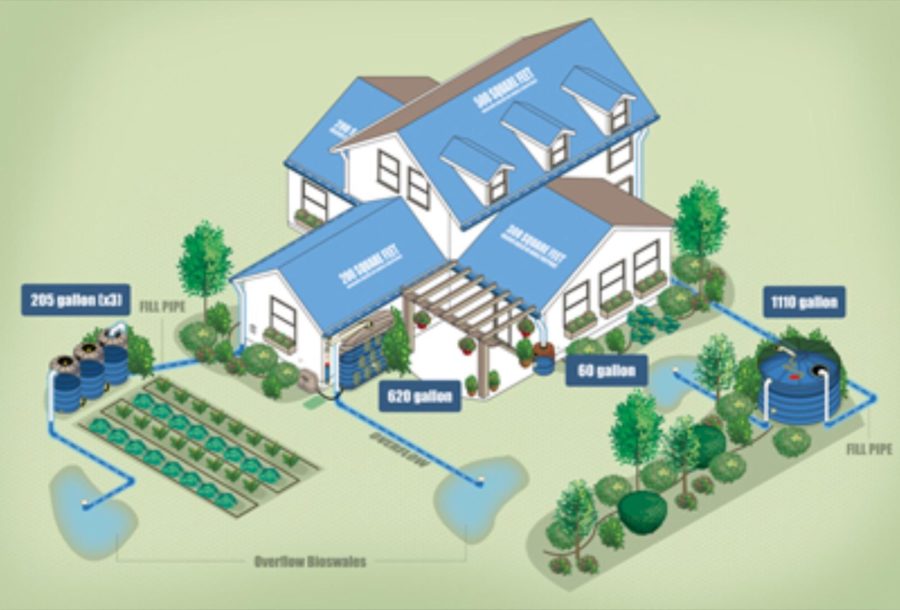Wringing in the new year is global warming’s rippling effect on Sonoma County’s water worries. Water woes are historically nothing new, so why are cities like Santa Rosa surprised?
Melbourne, Australia’s decade-long drought nearly destroyed the city’s ability to function. And if the rain doesn’t continue, California will suffer from the worst drought in state history.
Australia and California share similar drought dilemmas, landscapes and economies. Up until 2010, Australia experienced an extended 10-year drought notoriously known as the Big Dry. By the time rain returned, the country had reinvented its precious resource regime.
Communities aren’t awarded the liberty to hope for rain and pray for Mother Nature to behave. “People need to educate themselves on conservation and make a lifestyle change,” said Lucas Alvillar, former Santa Rosa Junior College VP of sustainability. “Water is more than just what comes out of the faucet.”
Cities like Melbourne integrated backyard water tanks and modern-day rooftop rain barrel systems subsidized by government incentives. Farmers who once had the right to use unlimited amounts of water were required to reallocate their water in the off-season.
Two-thirds of Australia’s homes use “gray-water” systems recycled from dishwashers, showers, gardens and washing machines for toilets. More than half the houses have barrels to catch rain from gutters for the gray-water systems. One heavy rainstorm yields enough water for a house to last an entire summer season.
“The prevailing difference between America and Australia, however, is a sense of personal responsibility,” said Matthew Heberger, a researcher at the Pacific Institute in Oakland who studied how Australia handled the Big Dry.
“A lesson America can learn from Australia is to stop thinking of the drought as something out of the ordinary, but rather a normal and recurring part of our current climate and work collectively as a community towards a solution,” Heberger said.
His discovery was simple yet profound. Australia’s success in handling the drought stemmed from a joint community effort towards constant conservation. Australia had no choice but to manage its water like a precious treasure.
California, on the other hand, tends to rely on finger-pointing. “The general public blaming Mother Nature, farmers blaming cities, cities blaming farmers and environmentalists blaming non-environmentalists for the lack of water, which takes away the spotlight from the true factors of inefficiency resulting in unexplored conservation options,” Heberger said.
Drought caused by global warming, overuse of water resources and lack of conservation are just a few factors. “The drought is just one reflection of all the changes we are seeing as a result of global warming,” said Kasey Wade, SRJC environmental conservation program instructor. “There are simple practices we can implement into our daily lives that make a difference; consciously creating a movement towards action in sustainability.”
Wade said there are things we can do. Conservation and sustainability are conceivable concepts by simply changing the current flow from a tipping point into a turning point by using a collective personal responsibility movement towards action.
For instance, Wade said water can be managed with bio swells, a process called “Slow It, Spread It, Sink It.” It is a conservation practice which mini-earth dams are created so water can accumulate before it runs off into creeks, rivers and oceans.
Implementing these simple actions slows water flow so it spreads, then naturally and slowly sinks into the Earth’s water table.
In 2015, California Gov. Jerry Brown signed legislation on more than $1 billion in spending for water projects.
Hundreds of millions of those dollars are allocated for long-term projects associated with flood control, desalination and water recycling.
Gov. Brown’s water fund measure is one piece of a much larger effort to help those most impacted by the drought and prepare the state for an uncertain future, Brown said in a statement in spring 2015.
SRJC student Emelia Stewart said, “I changed my shower head, turn off the water when I brush my teeth and I don’t use water bottles.”
However, State Water Resources Control Board authorities said Californians have fallen short of Brown’s goal of reducing water use by 20 percent.
“I only wash large loads of laundry; never small loads of laundry,” said SRJC student Blair Ripley.
One particular project currently in the waterworks is Southern California’s plan for desalination by turning 50 million gallons of the Pacific Ocean into potable water per day. The plant is slated to open this fall as the first in the state to tap an ocean for drinking water. More than a dozen other plants in California are in the planning stages.



Carin • Mar 10, 2016 at 9:50 pm
Informative and beautifully written! Well done!